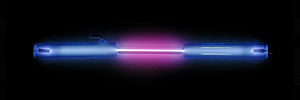User:Littleleeayres/sandbox
Hydrogen[edit]
 Purple glow in its plasma state | ||||||||||||||||||||||||||
| Hydrogen | ||||||||||||||||||||||||||
|---|---|---|---|---|---|---|---|---|---|---|---|---|---|---|---|---|---|---|---|---|---|---|---|---|---|---|
| Appearance | Colorless gas | |||||||||||||||||||||||||
| Standard atomic weight Ar°(H) | ||||||||||||||||||||||||||
| Hydrogen in the periodic table | ||||||||||||||||||||||||||
| ||||||||||||||||||||||||||
| Atomic number (Z) | 1 | |||||||||||||||||||||||||
| Group | group 1: hydrogen and alkali metals | |||||||||||||||||||||||||
| Period | period 1 | |||||||||||||||||||||||||
| Block | s-block | |||||||||||||||||||||||||
| Electron configuration | 1s1 | |||||||||||||||||||||||||
| Electrons per shell | 1 | |||||||||||||||||||||||||
| Physical properties | ||||||||||||||||||||||||||
| Phase at STP | gas | |||||||||||||||||||||||||
| Melting point | (H2) 13.99 K (−259.16 °C, −434.49 °F) | |||||||||||||||||||||||||
| Boiling point | (H2) 20.271 K (−252.879 °C, −423.182 °F) | |||||||||||||||||||||||||
| Density (at STP) | 0.08988 g/L | |||||||||||||||||||||||||
| when liquid (at m.p.) | 0.07 g/cm3 (solid: 0.0763 g/cm3)[3] | |||||||||||||||||||||||||
| when liquid (at b.p.) | 0.07099 g/cm3 | |||||||||||||||||||||||||
| Triple point | 13.8033 K, 7.041 kPa | |||||||||||||||||||||||||
| Critical point | 32.938 K, 1.2858 MPa | |||||||||||||||||||||||||
| Heat of fusion | (H2) 0.117 kJ/mol | |||||||||||||||||||||||||
| Heat of vaporization | (H2) 0.904 kJ/mol | |||||||||||||||||||||||||
| Molar heat capacity | (H2) 28.836 J/(mol·K) | |||||||||||||||||||||||||
Vapor pressure
| ||||||||||||||||||||||||||
| Atomic properties | ||||||||||||||||||||||||||
| Oxidation states | −1, 0, +1 (an amphoteric oxide) | |||||||||||||||||||||||||
| Electronegativity | Pauling scale: 2.20 | |||||||||||||||||||||||||
| Ionization energies |
| |||||||||||||||||||||||||
| Covalent radius | 31±5 pm | |||||||||||||||||||||||||
| Van der Waals radius | 120 pm | |||||||||||||||||||||||||
| Other properties | ||||||||||||||||||||||||||
| Natural occurrence | primordial | |||||||||||||||||||||||||
| Crystal structure | hexagonal (hP4) | |||||||||||||||||||||||||
| Lattice constants | a = 378.97 pm c = 618.31 pm (at triple point)[4] | |||||||||||||||||||||||||
| Thermal conductivity | 0.1805 W/(m⋅K) | |||||||||||||||||||||||||
| Magnetic ordering | diamagnetic[5] | |||||||||||||||||||||||||
| Molar magnetic susceptibility | −3.98×10−6 cm3/mol (298 K)[6] | |||||||||||||||||||||||||
| Speed of sound | 1310 m/s (gas, 27 °C) | |||||||||||||||||||||||||
| CAS Number | 12385-13-6 1333-74-0 (H2) | |||||||||||||||||||||||||
| History | ||||||||||||||||||||||||||
| Discovery | Henry Cavendish[7][8] (1766) | |||||||||||||||||||||||||
| Named by | Louis-Bernard Guyton de Morveau Antoine Lavoisier[9][10] (1787) | |||||||||||||||||||||||||
| Isotopes of hydrogen | ||||||||||||||||||||||||||
| ||||||||||||||||||||||||||
Hydrogen is the chemical element with the symbol H and atomic number 1. With a standard atomic weight of 1.008, hydrogen is the lightest element in the periodic table. Hydrogen is the most abundant chemical substance in the Universe, constituting roughly 75% of all baryonic mass. Non-remnant stars are mainly composed of hydrogen in the plasma state. The most common isotope of hydrogen, termed protium (name rarely used, symbol 1H), has one proton and no neutrons.
The universal emergence of atomic hydrogen first occurred during the recombination epoch (Big Bang). At standard temperature and pressure, hydrogen is a colourless, odourless, tasteless, non-toxic, nonmetallic, highly combustible diatomic gas with the molecular formula H2. Since hydrogen readily forms covalent compounds with most nonmetallic elements, most of the hydrogen on Earth exists in molecular forms such as water or organic compounds. Hydrogen plays a particularly important role in acid-base reactions because most acid-base reactions involve the exchange of protons between soluble molecules. In ionic compounds, hydrogen can take the form of a negative charge (i.e, anion) when it is known as a hydride, or as a positively charged (i.e, cation) species denoted by the symbol H+. The hydrogen cation is written as though composed of a bare proton, but in reality, hydrogen cations in ionic compounds are always more complex. As the only neutral atom for which the Schrödinger equation can be solved analytically, the study of the energetics and bonding of the hydrogen atom has played a key role in the development of quantum mechanics.
- ^ "Standard Atomic Weights: Hydrogen". CIAAW. 2009.
- ^ Prohaska, Thomas; Irrgeher, Johanna; Benefield, Jacqueline; Böhlke, John K.; Chesson, Lesley A.; Coplen, Tyler B.; Ding, Tiping; Dunn, Philip J. H.; Gröning, Manfred; Holden, Norman E.; Meijer, Harro A. J. (2022-05-04). "Standard atomic weights of the elements 2021 (IUPAC Technical Report)". Pure and Applied Chemistry. doi:10.1515/pac-2019-0603. ISSN 1365-3075.
- ^ Wiberg, Egon; Wiberg, Nils; Holleman, Arnold Frederick (2001). Inorganic chemistry. Academic Press. p. 240. ISBN 978-0123526519.
- ^ Arblaster, John W. (2018). Selected Values of the Crystallographic Properties of Elements. Materials Park, Ohio: ASM International. ISBN 978-1-62708-155-9.
- ^ Lide, D. R., ed. (2005). "Magnetic susceptibility of the elements and inorganic compounds". CRC Handbook of Chemistry and Physics (PDF) (86th ed.). Boca Raton (FL): CRC Press. ISBN 978-0-8493-0486-6.
- ^ Weast, Robert (1984). CRC, Handbook of Chemistry and Physics. Boca Raton, Florida: Chemical Rubber Company Publishing. pp. E110. ISBN 978-0-8493-0464-4.
- ^ "Hydrogen". Van Nostrand's Encyclopedia of Chemistry. Wylie-Interscience. 2005. pp. 797–799. ISBN 978-0-471-61525-5.
- ^ Emsley, John (2001). Nature's Building Blocks. Oxford: Oxford University Press. pp. 183–191. ISBN 978-0-19-850341-5.
- ^ Miśkowiec, Paweł (April 2023). "Name game: The naming history of the chemical elements—part 1—from antiquity till the end of 18th century". Foundations of Chemistry. 25 (1): 29–51. doi:10.1007/s10698-022-09448-5.
- ^ Stwertka, Albert (1996). A Guide to the Elements. Oxford University Press. pp. 16–21. ISBN 978-0-19-508083-4.


